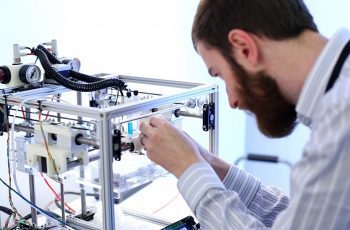Ingrown toenails can be a painful and bothersome condition affecting around 20 percent of people at some point in their lives. The condition typically causes pain, redness, and swelling, making it essential to find effective solutions. Luckily, there are several natural remedies and home treatments that can help alleviate symptoms and promote healing.
One of the simplest and most accessible ways to naturally treat ingrown toenails is by soaking the affected foot in warm, soapy water. This can help reduce swelling, ease pain, and prevent infection. Another popular home remedy is using apple cider vinegar. By soaking the foot in a mixture of warm water and apple cider vinegar, you can create an environment that discourages bacteria growth and promotes healing.
Aside from soaking, it’s also beneficial to pack the affected area with dental floss or cotton. This can help lift the edge of the ingrown toenail and enable proper nail growth. Alongside these home remedies, wearing comfortable shoes that provide ample space for the toes and using toe protectors can help prevent further irritation and improve the condition.
While these natural treatments can be effective for mild cases of ingrown toenails, it’s important to note that severe or recurring cases may require medical intervention. If the pain and swelling worsen or if you have an underlying condition such as diabetes, it’s crucial to seek professional medical treatment.
Ways to Naturally Remove Ingrown Toenail
- Soaking the affected foot in warm, soapy water can reduce swelling and ease pain.
- Using apple cider vinegar in a foot soak can discourage bacteria growth and promote healing.
- Packing the area with dental floss or cotton can encourage proper nail growth.
- Wearing comfortable shoes and using toe protectors can provide relief and prevent further irritation.
- Severe or recurring cases may require medical intervention, especially for individuals with underlying conditions.
Common Home Remedies for Ingrown Toenail
When dealing with an ingrown toenail, there are several effective home remedies that can provide relief and promote healing. These natural treatments are easy to do and can be done in the comfort of your own home.
1. Soak in Warm, Soapy Water
One of the simplest and most effective remedies is soaking your affected foot in warm, soapy water. Fill a basin with warm water and add a mild soap. Soak your foot for up to 20 minutes, allowing the warmth to reduce swelling and ease pain. This can be done a few times a day for optimal results.
2. Apple Cider Vinegar Soak
Another popular home remedy involves apple cider vinegar. Create a mixture of warm water and apple cider vinegar, and soak your foot in it for up to 20 minutes daily. The natural properties of apple cider vinegar can help reduce inflammation and prevent infection.
3. Dental Floss or Cotton Packing
In some cases, gently placing dental floss or cotton under the ingrown toenail can encourage proper nail growth. However, caution is advised as improper placement may worsen the condition. Consult a healthcare professional or podiatrist for proper guidance.
4. Apply Antiseptic Ointment
To prevent infection and promote healing, you can apply an antiseptic ointment to the affected area. This will help keep the area clean and prevent bacteria from entering the open wound.
5. Choose Comfortable Shoes and Socks
Wearing comfortable shoes that provide ample space for your toes is essential for managing and preventing ingrown toenails. Opt for wider shoe styles with roomy toe boxes to alleviate pressure on the affected area. Similarly, wearing breathable socks made of natural fibers can help reduce moisture and prevent bacterial growth.
Natural Treatments for Ingrown Toenail
In addition to home remedies, there are natural treatments available for ingrown toenails. These holistic solutions promote healing and prevent future occurrences, providing an effective treatment for ingrown toenail.
- Toe Protector: Using a toe protector can act as a cushioning barrier, providing relief and protecting the affected toe. This can help alleviate pain and discomfort caused by an ingrown toenail.
- Toe Braces: Thin composite devices called toe braces can hold the toe in place and shield the skin as a new nail grows back. These braces promote proper nail growth and help prevent the nail from digging into the surrounding skin.
These natural treatments offer a safe and non-invasive approach to treating ingrown toenails. By addressing the root cause and promoting healthy nail growth, they can effectively alleviate symptoms and prevent future ingrown toenails.
When to Seek Medical Treatment
While home remedies and natural treatments are often effective in managing ingrown toenails, it’s important to know when to seek medical treatment. If you experience severe pain and swelling, or if the home remedies don’t improve the condition of your ingrown toenail, it’s time to see a doctor. Ignoring these symptoms can lead to further complications.
If you notice any signs of infection such as increased redness, warmth, or pus, it’s crucial to seek medical attention as soon as possible. Additionally, if your ingrown toenail is causing an allergic skin reaction, it’s best to consult with a healthcare professional.
Individuals with underlying conditions such as diabetes or compromised immune systems should be especially cautious. If you fall into this category and develop an ingrown toenail, it’s important to seek medical treatment promptly to prevent any potential complications.
In some cases, a doctor may recommend oral antibiotics to fight off an infection or perform a procedure to remove or correct the ingrown nail. Remember, seeking medical treatment when home remedies don’t improve the condition is a proactive step towards resolving the issue safely and effectively.
If you’re unsure whether you should see a doctor for your ingrown toenail, it’s always best to err on the side of caution and seek professional advice.
Medical Treatment Options for Ingrown Toenail
When home remedies and natural treatments are not sufficient, there are medical treatment options available for ingrown toenails. These options include:
- Lifting the nail: A healthcare provider can gently lift the ingrown nail edge to relieve pressure and promote proper growth.
- Taping the nail: Taping the affected nail can help guide its growth and prevent it from digging into the skin.
- Placing a gutter splint under the nail: A gutter splint can be inserted under the ingrown nail to encourage correct growth and prevent further irritation.
- Partially removing the nail: In some cases, a healthcare provider may remove part of the ingrown nail to alleviate pain and allow for proper healing.
- Removing the nail and underlying tissue: In severe cases, complete nail removal, including the underlying tissue, may be necessary to resolve the problem and prevent future occurrences.
These procedures should be performed by a qualified healthcare provider and can provide relief from the discomfort caused by ingrown toenails. They aim to alleviate symptoms, promote proper nail growth, and prevent the reoccurrence of ingrown toenails.

Self-Care and Prevention Tips for Ingrown Toenail
Along with home remedies and medical treatments, self-care and prevention are important aspects of managing ingrown toenails. By taking proactive steps, you can alleviate symptoms and reduce the risk of future occurrences.
Soaking the Feet
Soaking the feet in warm, soapy water can provide relief and promote healing. Fill a basin or tub with warm water and add a mild soap. Soak your feet for 15 to 20 minutes, allowing the warm water to soften the skin and reduce inflammation. This can be done once or twice daily, depending on the severity of the ingrown toenail.
Placing Cotton or Dental Floss
Placing small pieces of cotton or dental floss under the affected toenail can help encourage proper nail growth. Gently lift the corner of the ingrown toenail using a clean pair of tweezers, then insert a small amount of cotton or dental floss underneath. This can help lift the nail and prevent it from growing into the surrounding skin.
Applying Petroleum Jelly
Applying a thin layer of petroleum jelly to the affected area can help moisturize and soften the skin. This can make it easier for the nail to grow out without causing further discomfort or irritation.
Choosing Sensible Footwear
Wearing shoes that provide ample space for your toes is crucial for preventing ingrown toenails. Opt for footwear that has a wide toe box and avoids narrow or pointy designs that put pressure on your toenails. Additionally, choose shoes made from breathable materials to prevent excessive sweating and moisture buildup.
Taking Pain Relievers
If you experience pain or discomfort due to an ingrown toenail, over-the-counter pain relievers such as acetaminophen or ibuprofen can help. Follow the instructions on the packaging and consult with a healthcare professional if you have any concerns or existing medical conditions.
Practicing Good Nail Care Routines
Maintaining proper nail care is essential for preventing ingrown toenails. Trim your toenails straight across and avoid cutting them too short. Additionally, avoid tearing or picking at your nails, as this can lead to injury and increase the risk of ingrown toenails. Keep your feet clean and dry, and moisturize your skin regularly to prevent dryness and cracking.
Incorporating these self-care measures into your routine can help alleviate the discomfort associated with ingrown toenails and reduce the likelihood of future occurrences. By taking proactive steps and practicing good foot hygiene, you can maintain healthy and pain-free feet.
Surgical Solutions for Severe Ingrown Toenail
In severe cases of ingrown toenails that do not respond to home remedies or medical treatments, surgical intervention may be necessary. When all other options have been exhausted, surgical solutions can provide lasting relief and prevent recurring issues. If you are experiencing severe pain, persistent infection, or other complications, it is important to consult with a healthcare professional to discuss surgical options.
Partial or Total Nail Avulsion
One surgical option for severe ingrown toenails is partial or total nail avulsion. In this procedure, the affected portion of the nail is removed either partially or entirely. By removing the ingrown portion, the pressure and discomfort on the surrounding tissues are alleviated, promoting healing and preventing further complications.
Chemical Phenol Application
In some cases, a healthcare professional may apply a chemical called phenol to destroy the nail root and prevent regrowth. Phenol is a caustic substance that effectively stops the nail from growing back, reducing the chances of future ingrown toenails. This procedure is typically performed under local anesthesia to ensure patient comfort.
Zadik’s Procedure
Another surgical option for severe ingrown toenails is a Zadik’s procedure. During this surgery, the root of the nail is surgically removed to stop it from growing and causing further discomfort. The Zadik’s procedure can provide long-lasting relief for individuals with severe and recurrent ingrown toenails.
It’s important to note that surgical solutions should only be considered as a last resort when all other non-invasive treatments have failed. These procedures should only be performed by experienced healthcare professionals to ensure optimal results and minimize the risk of complications.
Remember, every case is unique, and the choice of surgical intervention will depend on the severity and specific needs of the individual. Consult with a healthcare professional to discuss the most suitable surgical option for your severe ingrown toenail.

Conclusion
Addressing ingrown toenails promptly is essential to prevent complications and promote healing. By combining home remedies, natural treatments, and medical interventions, individuals can effectively treat this common problem. While self-care measures provide relief for minor cases, severe or recurring ingrown toenails may require professional medical treatment or surgical solutions.
To prevent ingrown toenails, it is important to maintain proper foot hygiene and wear appropriate footwear that allows toes to move freely. Practicing prevention techniques such as cutting nails straight across, avoiding shoes that are too tight, and keeping nails clean and trimmed can significantly reduce the risk of developing ingrown toenails.
When it comes to ingrown toenail treatment, natural solutions and holistic approaches can be beneficial. Home remedies like warm soapy water soaks and apple cider vinegar soaks can help alleviate pain and reduce swelling. Additionally, natural treatments such as toe protectors and toe braces can aid in the proper growth of the nail and prevent future occurrences.
In severe cases where other treatments have not been effective, surgical options may be necessary. However, surgical solutions should be considered as a last resort and performed by a qualified healthcare professional. By taking proactive measures and seeking appropriate treatment, individuals can overcome the discomfort of ingrown toenails and maintain healthy feet.
FAQ
What are some common home remedies for ingrown toenail?
Common home remedies for ingrown toenail include soaking the affected foot in warm, soapy water, using apple cider vinegar, and packing the area with dental floss or cotton.
What are some natural treatments for ingrown toenail?
Natural treatments for ingrown toenail include using a toe protector and toe braces, which can provide relief and promote proper nail growth.
When should I seek medical treatment for ingrown toenail?
It is important to see a doctor if the pain and swelling are severe, home remedies don’t improve the condition, or the ingrown toenail is causing an allergic skin reaction. Individuals with underlying conditions such as diabetes or compromised immune systems should also seek medical treatment.
What are the medical treatment options for ingrown toenail?
Medical treatment options for ingrown toenail include lifting the nail, taping the nail, placing a gutter splint under the nail, partially removing the nail, or, in severe cases, removing the nail and underlying tissue.
What are some self-care and prevention tips for ingrown toenail?
Self-care and prevention tips for ingrown toenail include soaking the feet in warm, soapy water, using cotton or dental floss to encourage proper nail growth, applying petroleum jelly, wearing sensible footwear, and practicing good nail care routines.
What are the surgical solutions for severe ingrown toenail?
Surgical solutions for severe ingrown toenail include partial or total nail avulsion, applying chemical phenol to destroy the nail root, or performing a Zadik’s procedure to surgically remove the root of the nail.
How can ingrown toenail be naturally treated?
Ingrown toenail can be naturally treated by using home remedies such as soaking the foot in warm, soapy water and applying apple cider vinegar, as well as practicing self-care measures and using natural treatments like toe protectors and toe braces.
What are some holistic approaches to ingrown toenail removal?
Holistic approaches to ingrown toenail removal include choosing natural treatments that promote healing and prevent future occurrences, as well as practicing self-care and prevention techniques.




